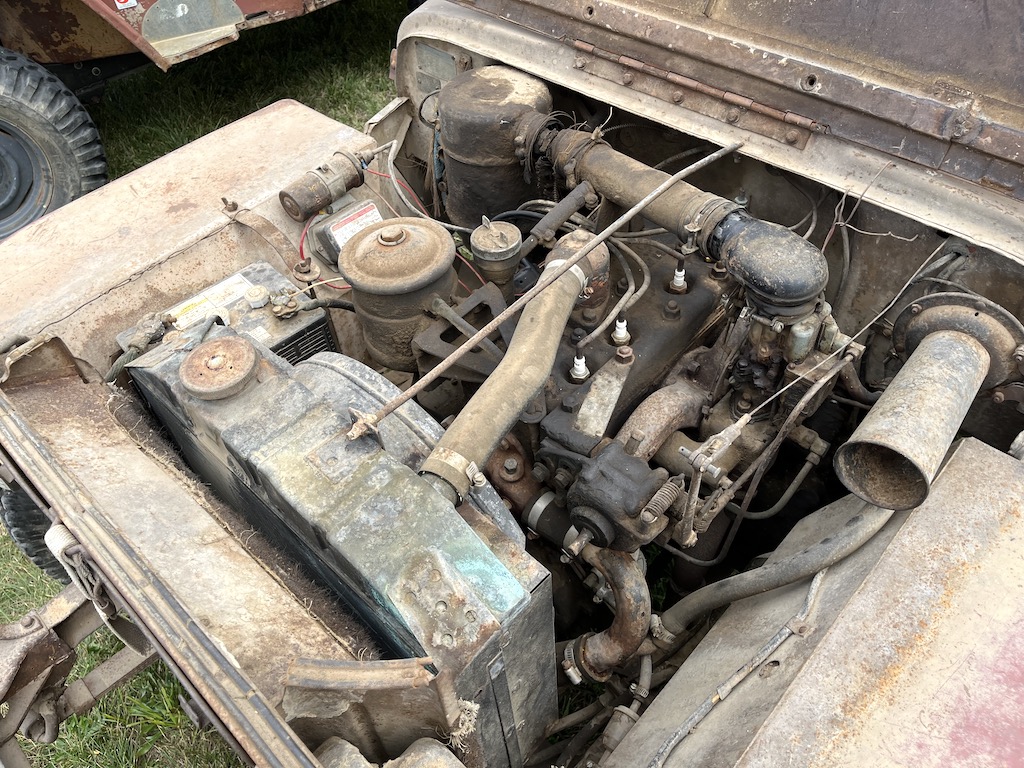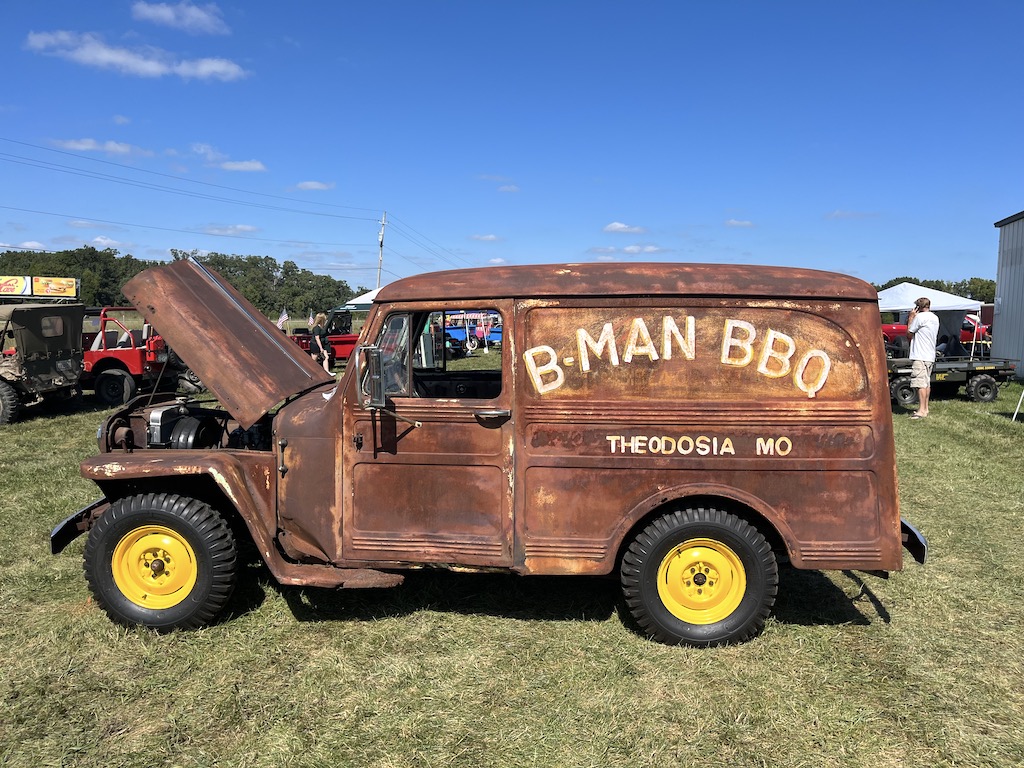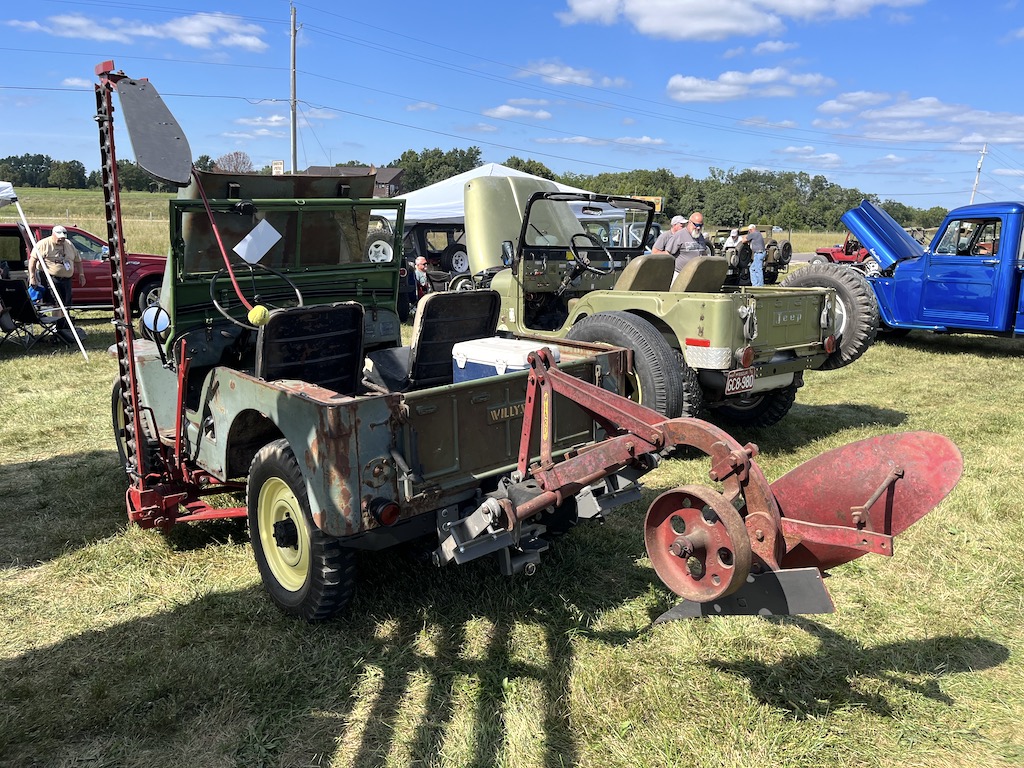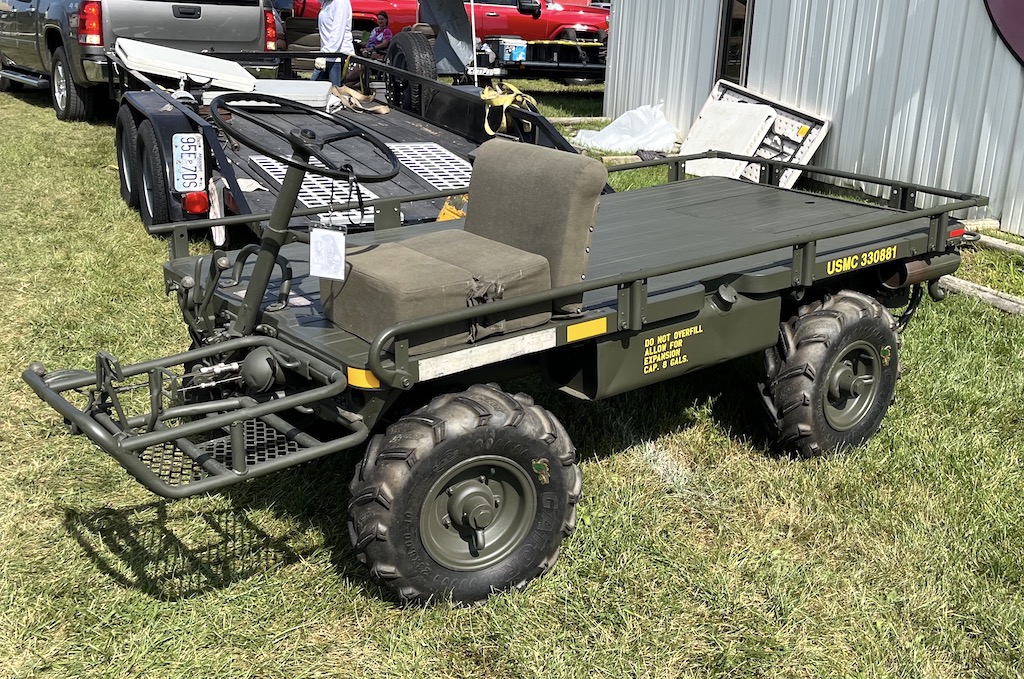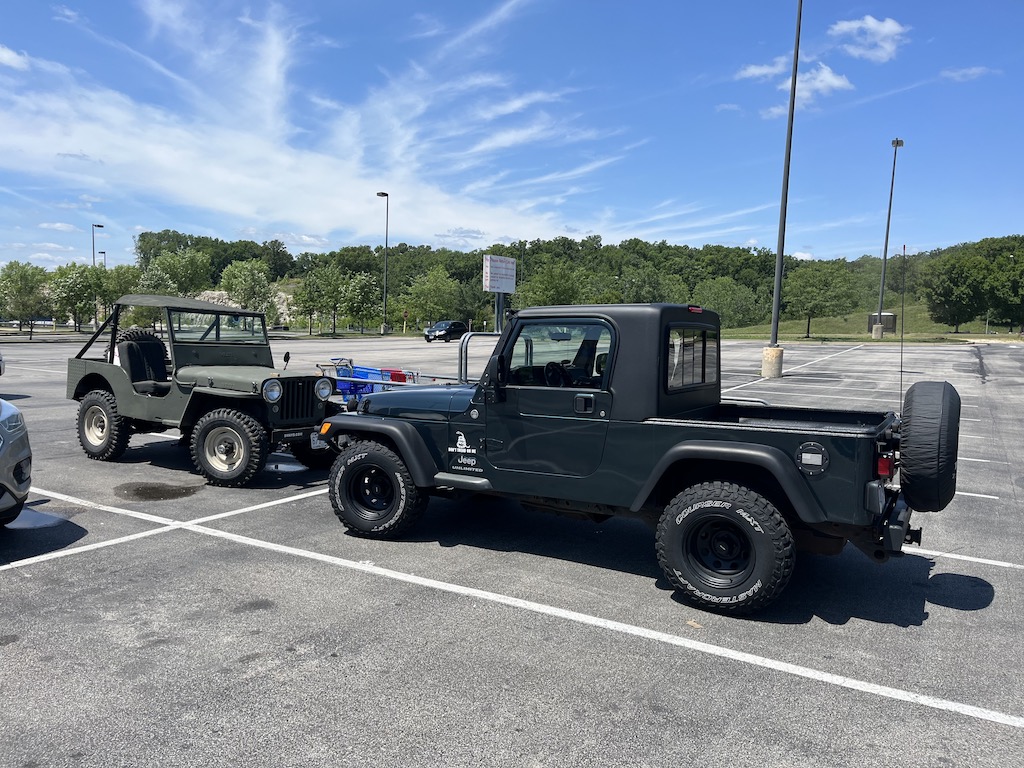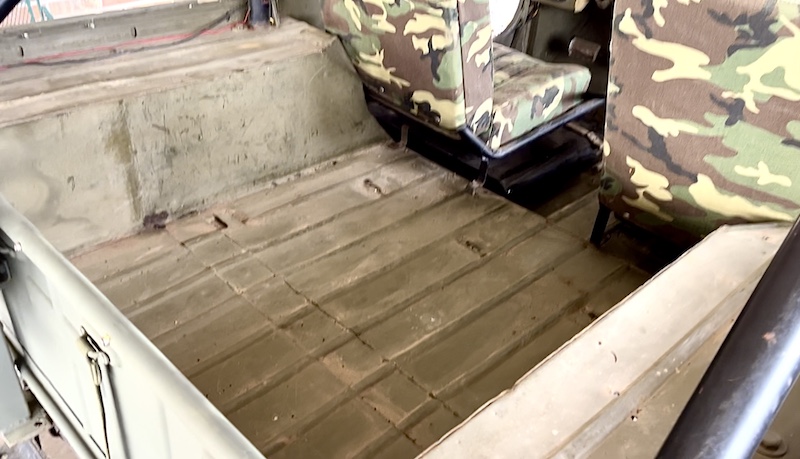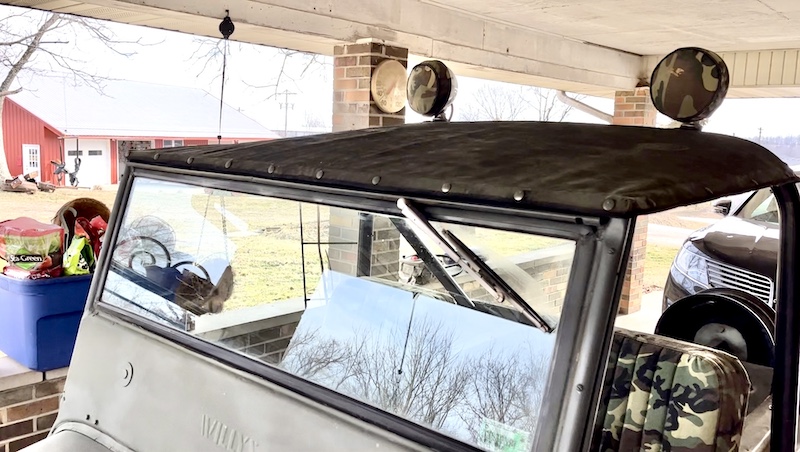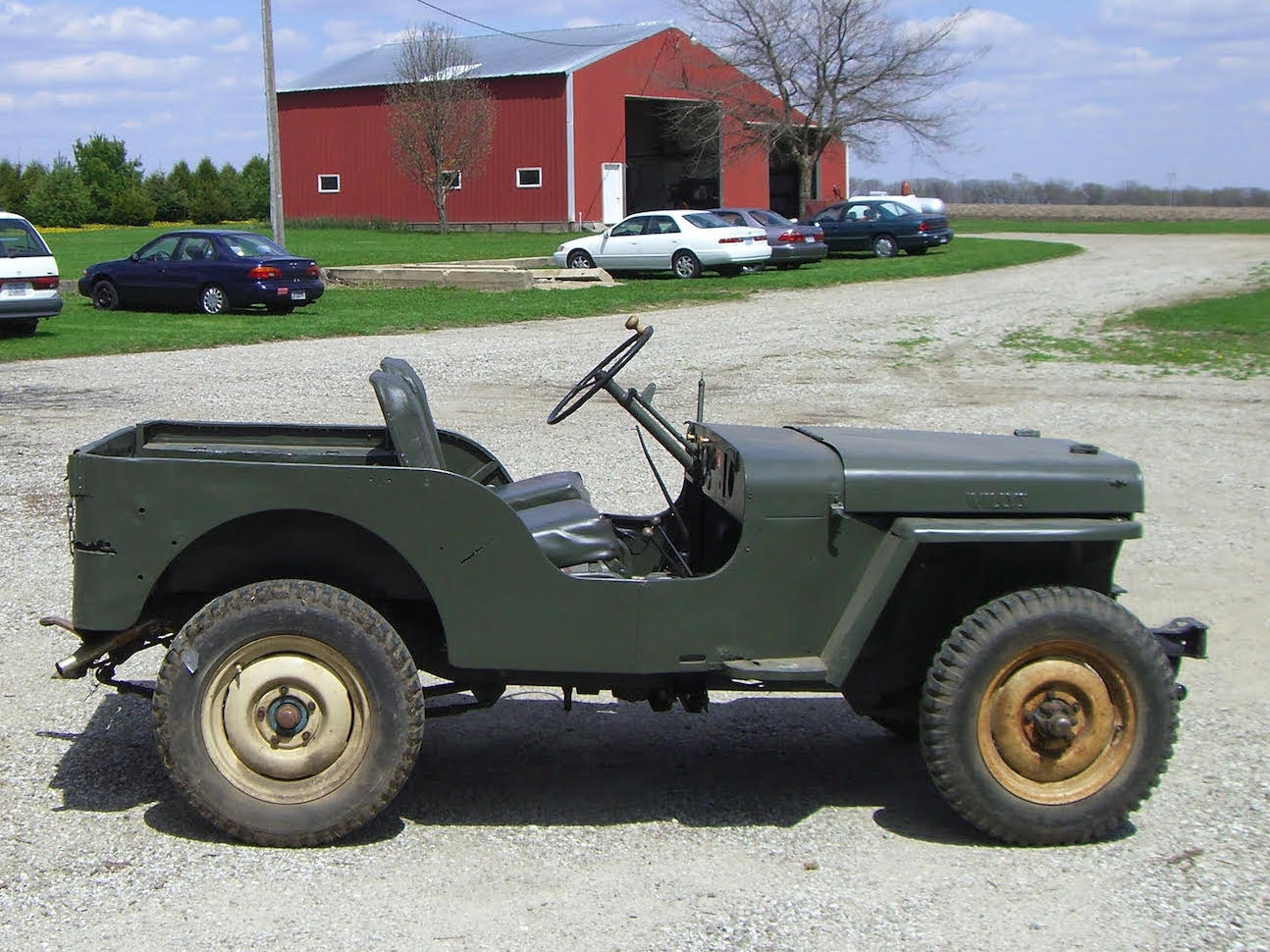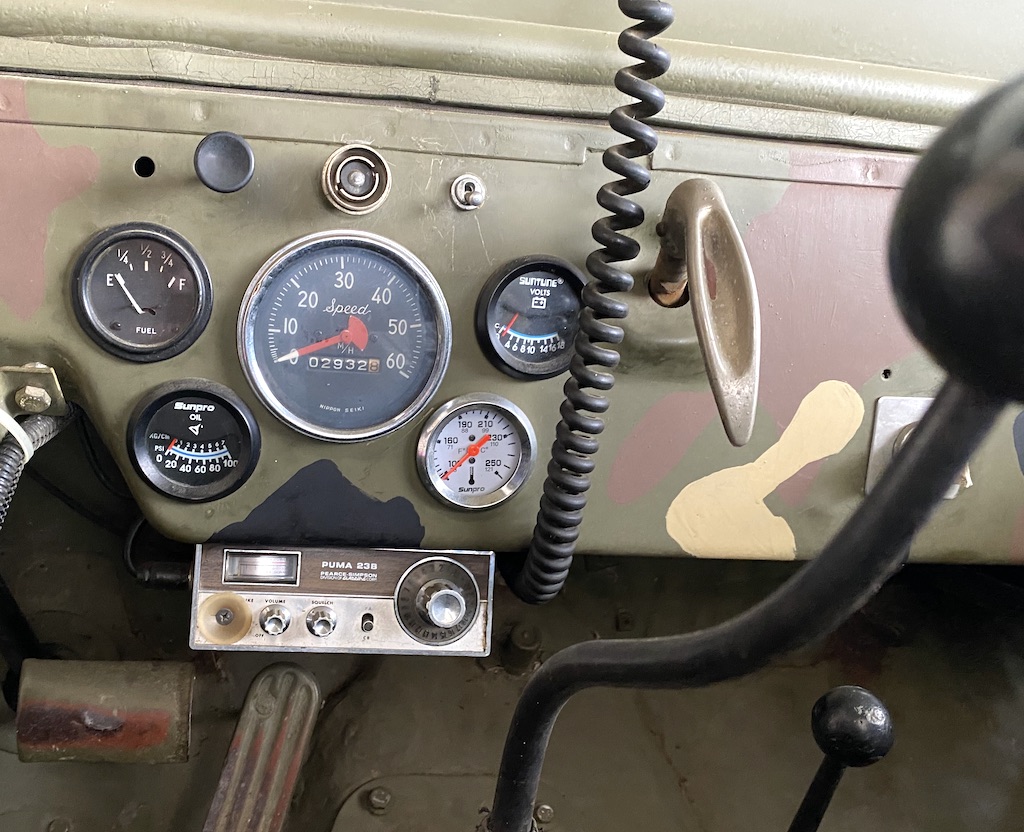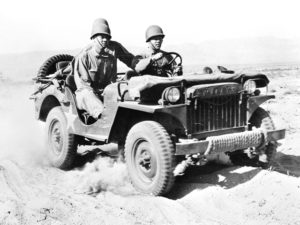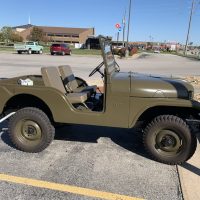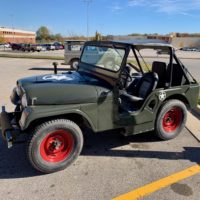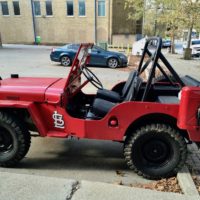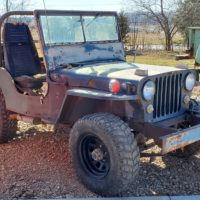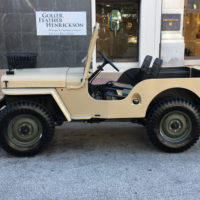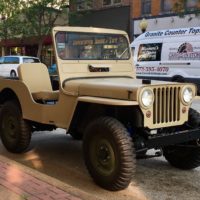I spent a couple of hours at the Jeep Reunion that took place in Fulton, MO on Friday and Saturday (I’ll share a few photos in a separate post). The highlight for me was the Latimer Family Jeep, a 1946 CJ2A.
The Jeep has been handed down to C. J. Latimer who was at the reunion with his father, step-father and grandmother. It was purchased by C. J.’s great grandfather in 1946 for use on the family farm near Marshall, MO.
A local businessman opened a Willys distributorship just after the war and the Latimer Jeep was the first one sold in Saline County. C. J.’s great grandfather purchased the Jeep for $150 and it arrived in a crate, ready for assembly!
The Latimer Jeep has an extension to the tub that was sold as a dealer accessory for agricultural use. According to family history, Great grandpa Latimer had to sign an affidavit that the Jeep would be used for agriculture. And when it was time to put up hay, the Jeep could be put in low gear and great grandpa Latimer could walk along beside the Jeep loading bales of hay.
C.J’s great-grandfather added a glove compartment but the Jeep is –for the most part– unchanged since it was purchased almost 80 years ago. The only hands that used and worked on the Jeep were C. J’s grandfather and great grandfather.
C. J. plans to get the Jeep drivable but plans no other changes.

